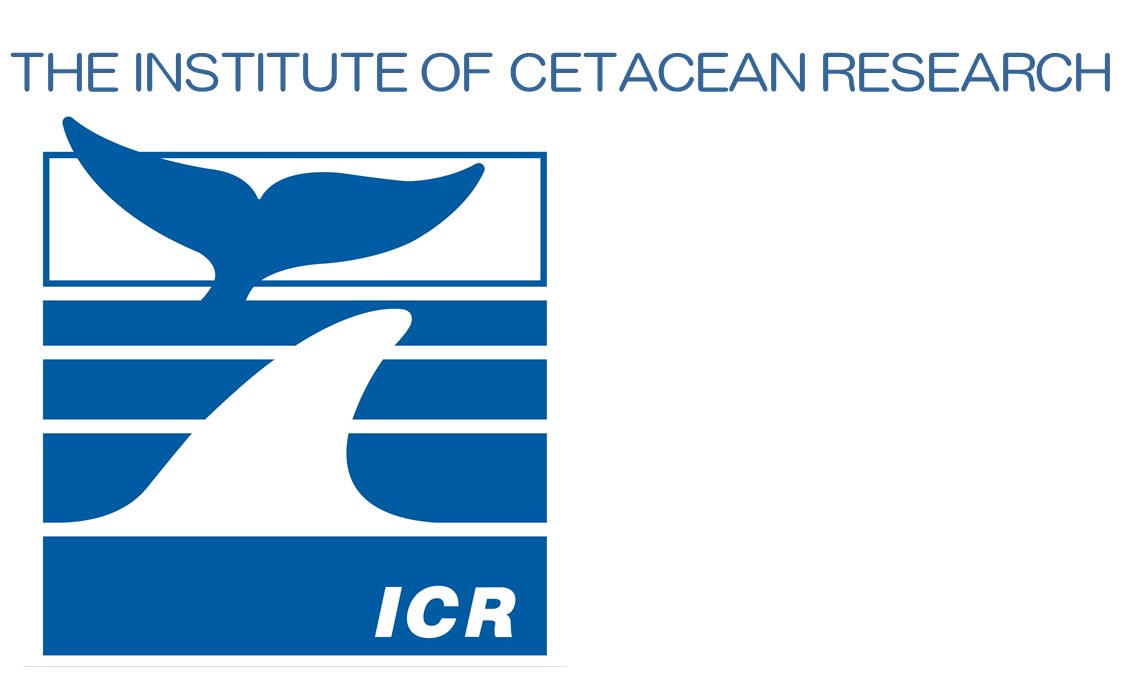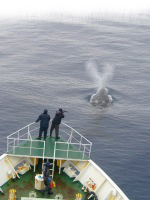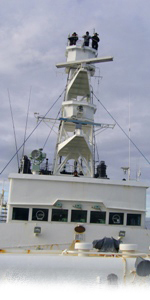Completion of the 2016 IWC/Japan Joint Cetacean Sighting Survey Cruise in the North Pacific - IWC-POWER
August 30, 2016
1. Background
IWC-POWER, the IWC/Japan Joint Cetacean Sighting Survey in the North Pacific, is a research program commonly known at the International Whaling Commission (IWC) as the Pacific Ocean Whale and Ecosystem Research (POWER).
IWC-POWER is based and applies the achievements, know-how and expertise acquired during the most successful and highly appraised international collaborative research effort conducted under the auspice of the IWC, the IWC-SOWER (International Whaling Commission-Southern Ocean Whale and Ecosystem Research, 1996/1997-2009/2010) research program which ended in 2010.
The 2016 survey was the seventh cruise since IWC-POWER began in 2010. The research plan of this program reflects the major research agenda of the IWC Scientific Committee. During the first five cruises, a number of fin, sei and humpback whales were sighted in the research area, where a large scale sighting survey had not been conducted for more than a half century.
2. Outline of the 2016 Research Cruise
The IWC-POWER program is conducted collaboratively by the IWC and the Government of Japan. The IWC Scientific Committee has developed the research program, and an actual survey cruise plan was jointly planned by associated institutions such as the National Research Institute of Far Sea Fisheries (Fisheries Research Agency of Japan) and South West Fisheries Science Center, NOAA/NMFS, USA Center (NOAA/NMFS, U.S.A.) under guidance of the IWC-POWER Steering Group (Convener, Dr. Hidehiro Kato, Professor of Tokyo University of Marine Science and Technology, Japan), which was established under auspice of the IWC Scientific Committee. The Institute of Cetacean Research, under the commission of the Fisheries Agency of Japan, has completed the survey cruise. Followings are summary of research cruise plan and its results.
2.1 Objectives
(1) estimation of Bryde's, sei and fin whales abundance (and other species where possible;
(2) collection of information on stock structure, particularly biopsy samples, with priority given to Bryde's, sei, fin, humpback and sperm whales; and
(3) collection of photo-identification data and biopsy samples for rare species encountered, especially North Pacific right whales and blue whales.
2.2 Research Cruise Period
From July 2 to August 30, 2016 (60 days).
2.3 Research Area
The research area is north of 20°N, south of 30°N, between longitudes 160°W and 135°W (High Sea including US-EEZ).

Fig.1 Research area for the 2016 IWC-POWER survey.
2.4 International Researchers
Koji Matsuoka (Cruise leader, Institute of Cetacean Research, Japan)
James Gilpatrick (South West Fisheries Science Center, NOAA/NMFS, USA)
JiHye Kim (Cetacean Research Institute, Republic of Korea)
Isamu Yoshimura (IWC nominated researcher, Japan)
2.5 Research Vessel
Yushin-maru No.3 (742 ton, Captain Hiroshi Eguchi)
2.6 Total Distance Covered
3,443.8 nautical miles (about 6,378 km)
2.7 Main whale sightings (including transit surveys)
Blue whale: 1 school; 1 animal
Sei whale: 1 school; 1 animal
Bryde's whale: 28 schools; 32 animals
Sperm whale: 32 schools; 115 animals
Cuvier's beaked whale: 2 schools; 5 animals
Risso's dolphin: 2 schools; 19 animals
Striped dolphin: 5 schools; 378 animals
Fraser's dolphin: 2 schools; 333 animals
2.8 Results of sample collections etc.
(1) Photo identification data
Bryde's whale: 14 animals
Sperm whale: 7 animals
These photographs are valuable information to study life history and migration patterns of each species.
(2) Collection of biopsy samples
Blue whale: 1 animal
Sei whale: 1 animal
Bryde's whale: 16 animals
Sperm whale: 5 animals
These samples will be used for examination of stock structure of each species.




